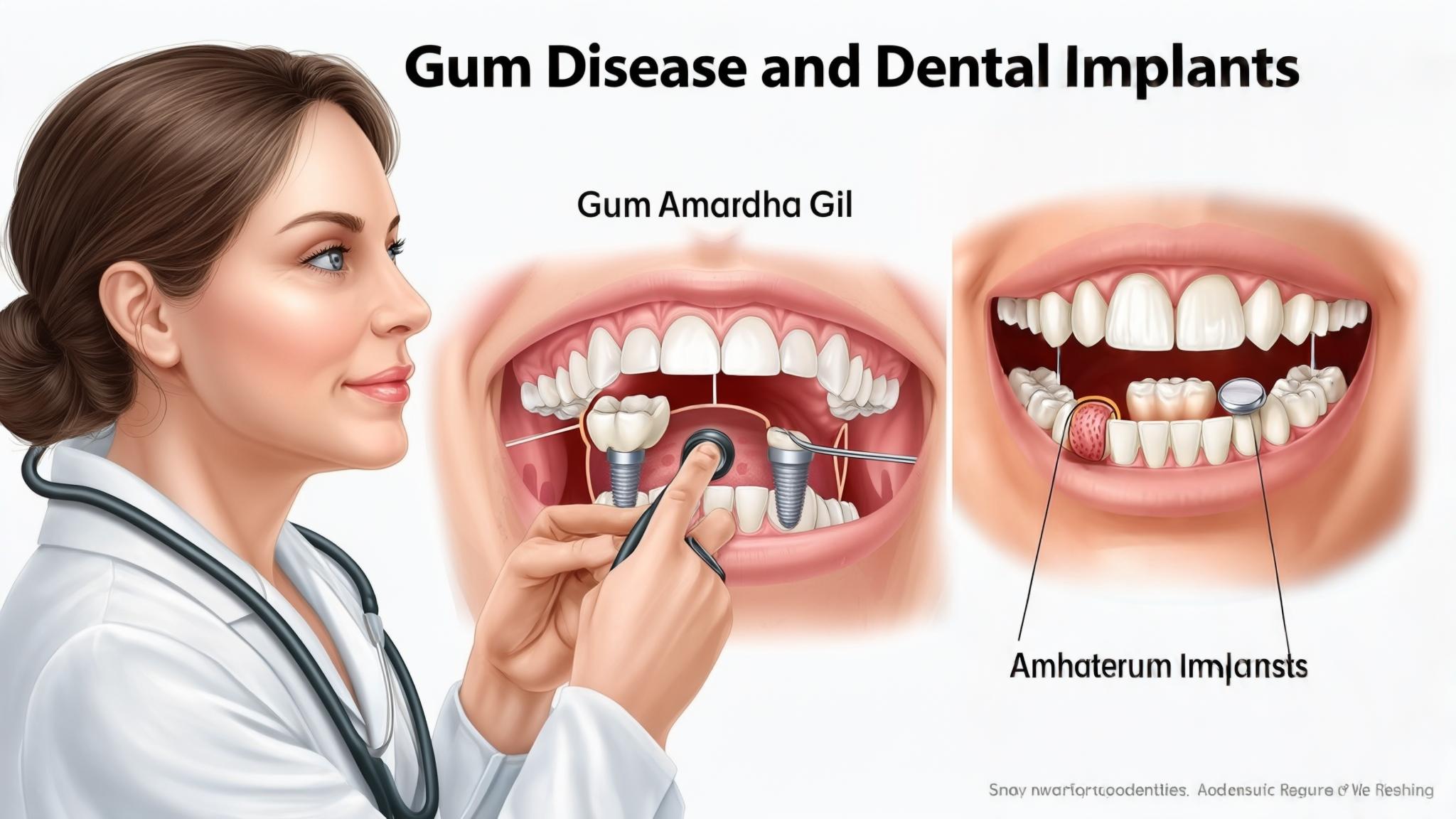Introduction
Dental implants have become a popular solution for replacing missing teeth, offering a durable and natural-looking alternative to dentures and bridges. But what happens when gum disease enters the picture? Gum disease, a common oral health issue, can significantly impact the success of dental implants. Understanding how these two interact is crucial for anyone considering implants.
Understanding Gum Disease
Definition and Stages of Gum Disease
Gum disease, also known as periodontal disease, is an infection of the tissues that hold your teeth in place. It progresses in stages:
- Gingivitis: This is the earliest stage, where the gums become inflamed and may bleed easily.
- Periodontitis: If left untreated, gingivitis can advance to periodontitis, where the inner layer of the gum and bone pull away from the teeth, forming pockets that can become infected.
Symptoms of Gum Disease
Recognizing the symptoms of gum disease early can help in managing it effectively:
- Swollen or bleeding gums: Often the first sign that something is amiss.
- Bad breath: Persistent bad breath or a bad taste in the mouth.
- Receding gums: Gums that are pulling away from the teeth, making them look longer.
- Loose teeth: As the disease progresses, it can cause teeth to loosen.
Causes of Gum Disease
Several factors contribute to the development of gum disease:
- Poor oral hygiene: Not brushing and flossing regularly leads to plaque buildup.
- Tobacco use: Smoking or chewing tobacco can increase the risk.
- Genetic factors: Some people may be more prone to gum disease due to their genetics.
- Hormonal changes: Such as those occurring during pregnancy, puberty, or menopause.
Impact of Gum Disease on Dental Implants
How Gum Disease Affects the Jawbone
Gum disease can lead to bone loss in the jaw, which is crucial for supporting dental implants. Without a healthy jawbone, implants may not have the necessary stability.
Increased Risk of Implant Failure
Gum disease increases the risk of infection around the implant site, potentially leading to complications during the healing process. This can result in implant failure.
Long-term Effects of Untreated Gum Disease on Oral Health
If gum disease is not addressed, it can lead to more severe oral health issues, such as tooth loss and further bone deterioration, complicating any future dental procedures.
Treatment Considerations Before Getting Implants
Importance of Treating Gum Disease Prior to Implant Placement
Addressing gum disease before considering implants is crucial. Treatments may include:
- Scaling and root planing: A deep-cleaning procedure to remove plaque and tartar.
- Antibiotic therapy: To help eliminate bacteria.
- Surgical interventions: In severe cases, surgery may be necessary to restore gum health.
Timeline for Treatment and Healing
The duration of gum disease treatment varies, but it typically takes a few weeks to several months, depending on severity. Post-treatment, a period of healing is necessary before proceeding with implants.
Evaluation by Dental Professionals
A thorough evaluation by a dental professional is essential. This includes:
- Comprehensive dental examination: To assess overall oral health.
- Imaging studies: Such as X-rays or CT scans to evaluate bone health.
Alternatives to Dental Implants for Patients with Gum Disease
For those unable to receive implants, other restorative options exist:
- Dentures: Removable appliances that replace missing teeth.
- Bridges: Fixed prosthetic devices that bridge the gap created by one or more missing teeth.
- Other restorative options: Depending on individual needs and circumstances.
Conclusion
In summary, while gum disease poses challenges to dental implants, understanding and treating it can lead to successful outcomes. Maintaining oral health is key, and anyone considering implants should seek professional guidance to navigate their options effectively.
References
- Explore scientific studies and articles on dental implants and gum disease.
- For further reading, visit the American Dental Association for resources on dental health.

